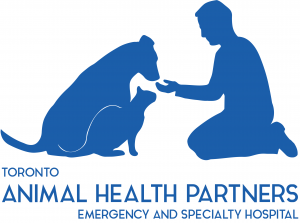Archives
Hello world!
Welcome to WordPress. This is your first post. Edit or delete it, then start writing!
- Standard
- January, 2
- 1475
- More
My dog has an ACL injury? What do I do?
MY DOG HAS AN ACL INJURY? WHAT DO I DO?

Written by Debbie Reynolds, BVSc, DACVS

Cranial cruciate ligament (CCL) disease (ACL injury in people) is the most common cause of limping on the back leg in dogs. The cause of CCL injuries in dogs is thought to be a disease process with slow progression of clinical signs with most owners reporting intermittent lameness following exercise and improvement after rest, which is consistent with the slow degeneration of the ligament in the knee. Often this becomes a persistent lameness following “jumping off the deck” or “chasing a squirrel”, at which time either the cruciate ligament completely tears or there is damage to the meniscus (cartilage in the knee). Unfortunately, because it seems to be a disease, not a sporting injury in dogs, it is not uncommon for the other knee to be affected at the time of diagnosis or become affected at a later date (within 12 to 18 months).
What do I do if I suspect a cruciate injury?
If your dog is limping on the back leg, an assessment by your veterinarian is advised to rule out a cruciate injury. There are many other causes of lameness in the back leg which need to be ruled out. Your family vet may recommend radiographs of the knee and hips. Radiographs of the knee typically show early arthritis (blue arrows) and “effusion” or fluid (red circle) within the knee joint which is consistent with a knee problem. On physical examination, instability of the knee is usually felt along with discomfort. Other diagnostic tests that can be performed if the injury is not obvious is an MRI of the knee, although this is not usually needed.

What are my options for treatment?
Cruciate ligament injury can be managed medically in dogs under 10 kg as long as there are no other knee problems such as unstable knee caps or cartilage injuries. Medical management involves strict rest for 6 weeks (leash walks to bathroom, no running or jumping) with a slow gradual return to activity over a further 6 weeks. If the limping continues, then surgery is recommended.
For dogs over 15 kg, cruciate ligament injury is best treated with surgery to slow the progression of arthritis and return them to normal function. There are many surgical options but the most common are the lateral suture or tightrope (replaces the function of the cruciate to stabilize the knee) or the TPLO (eliminates the need for an intact cruciate). The TPLO (see radiographs) seems to provide advantages for faster return to activity and lower failure rate, with over 95% of dogs being able to return to normal function following surgery.
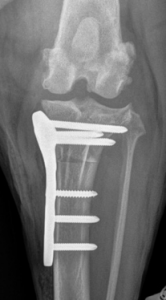
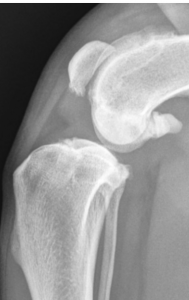
What about knee braces and physiotherapy?
Knee braces do not fix the cruciate in a dog and typically only help to reduce the inflammation in the knee. They are needed for the rest of the dogs life whenever they are active. Typically knee braces are reserved for dogs that cannot undergo surgery for other medical reasons.
Physiotherapy is excellent to maintain muscle mass before surgery and in the post surgery recovery period but will not “fix the cruciate”.
What is the recovery from surgery like?
Following either surgery, it is a 12-week period of restricted activity. For the lateral suture it is 6 to 8 weeks of strict rest, followed by a gradual return to activity. For the TPLO it is 2 weeks of on leash to the bathroom only with dogs typically weight bearing on the limb within 2-3 days. After 2 weeks, there is a gradual increase of on leash walking until the bone has healed and then they can return to normal activity.
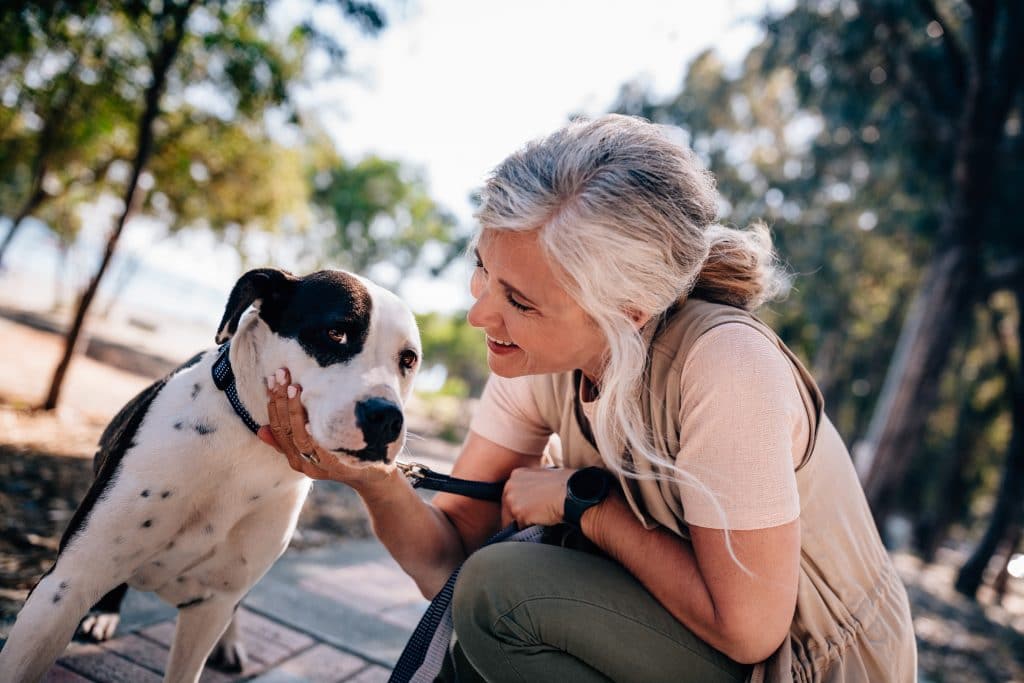
About The Company
Animal Health Partners Toronto is a new veterinary emergency and specialty hospital modeled after best practices in human medicine. Lead by a team of highly qualified veterinary specialists, Animal Health Partners Toronto Emergency and Specialty Hospital is bringing the world’s best practices of private human healthcare to veterinarian care.
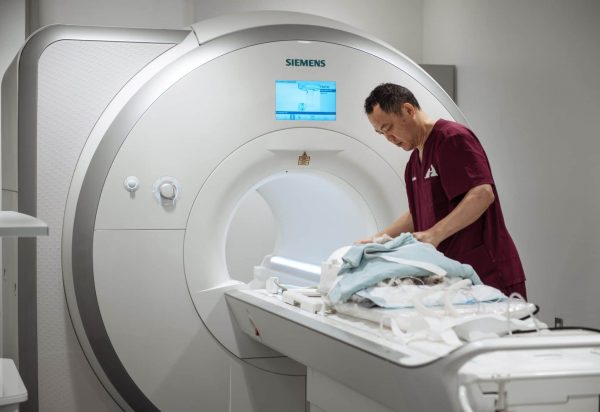
The technical proficiency and medical equipment at Animal Health Partners equals or exceeds that found in sophisticated human hospitals.
Animal Health Partners provides the highest-quality Veterinarian Services in Toronto. Our specialists combine their collective knowledge and skill in the treatment of complex or multifaceted cases. We serve as an extension of your family veterinarian and provide exceptional specialty care by treating our patients as if they were our own pets.
Our Core Values
Quality
At the root of all we do at Animal Health Partners is a commitment to the highest quality of veterinary care. This means that the diagnostic tests we run and the treatments we provide are informed by the best available scientific evidence and implemented by the most highly qualified veterinarians and staff.
Compassion
We understand that the experience of illness and injury can be painful and scary for pets and their owners. We strive to reduce discomfort as much as possible using gentle handling techniques, appropriate pain-management, stress-reducing design features, non-invasive interventions and a continuous emphasis on empathic patient-centered care.
Service
Intrinsic to our goal of providing the highest quality of medicine is providing efficient, courteous, attentive and responsive service to the owners and referring veterinarians that have entrusted us with the care of their pets and patients.
Innovation
Medicine is rapidly evolving. Our technologically advanced institution is equipped to employ and pioneer the most cutting-edge diagnostic and treatment modalities available in veterinary medicine with the goal of improving the quality of care for all patients.
Partnership
High-quality care and optimal patient outcomes rely not on any one individual but on the strength of the connections between many. Ensuring the best possible outcomes for our patients means creating solid partnerships with their owners and referring veterinarians. It also means establishing relationships more broadly with the community, the human medical field and with industry.
About The Company
Animal Health Partners Toronto is a new veterinary emergency and specialty hospital modeled after best practices in human medicine. Lead by a team of highly qualified veterinary specialists, Animal Health Partners Toronto Emergency and Specialty Hospital is bringing the world’s best practices of private human healthcare to veterinarian care.

The technical proficiency and medical equipment at Animal Health Partners equals or exceeds that found in sophisticated human hospitals.
Animal Health Partners provides the highest-quality Veterinarian Services in Toronto. Our specialists combine their collective knowledge and skill in the treatment of complex or multifaceted cases. We serve as an extension of your family veterinarian and provide exceptional specialty care by treating our patients as if they were our own pets.
Our Core Values
Quality
At the root of all we do at Animal Health Partners is a commitment to the highest quality of veterinary care. This means that the diagnostic tests we run and the treatments we provide are informed by the best available scientific evidence and implemented by the most highly qualified veterinarians and staff.
Compassion
We understand that the experience of illness and injury can be painful and scary for pets and their owners. We strive to reduce discomfort as much as possible using gentle handling techniques, appropriate pain-management, stress-reducing design features, non-invasive interventions and a continuous emphasis on empathic patient-centered care.
Service
Intrinsic to our goal of providing the highest quality of medicine is providing efficient, courteous, attentive and responsive service to the owners and referring veterinarians that have entrusted us with the care of their pets and patients.
Innovation
Medicine is rapidly evolving. Our technologically advanced institution is equipped to employ and pioneer the most cutting-edge diagnostic and treatment modalities available in veterinary medicine with the goal of improving the quality of care for all patients.
Partnership
High-quality care and optimal patient outcomes rely not on any one individual but on the strength of the connections between many. Ensuring the best possible outcomes for our patients means creating solid partnerships with their owners and referring veterinarians. It also means establishing relationships more broadly with the community, the human medical field and with industry.
[
- November, 24
- 4833
- Letter from the vet
- More
HOW CAN I GET MY PET TO THE VET DURING COVID?
HOW CAN I GET MY PET TO THE VET DURING COVID?

Written by Rosie Gao, B.Sc.

As a lifelong pet owner, I see and understand the anxieties and guilt that come with a pet’s sudden decline in health- and the need for a vet visit. Navigating pet care during COVID-19 can be even more difficult. Now more than ever, we need to plan ahead for our pets’ health care needs, and what to do if a vet visit is required when we can’t bring them there.
What if the only regular check up appointment slots are during the day, when you may need to be at work or at home guiding your child through virtual learning? What if your large, heavy, senior dog is suddenly unable to walk, and carrying him proves unsafe or impossible? What if you are isolating in a senior care center, and you need help sending your cat to their regular veterinarian?
Or, in more advanced cases, what if your pet needs to be transported from their regular vet to the referral hospital for overnight or specialty care? If they need monitoring, oxygen, fluids, or drug therapy administered during their transport? Wouldn’t you like to know that an option exists for a Registered Veterinary Technician to accompany your beloved companion on their trip, comforting them and ready to provide medical assistance to ensure the safest travels when they need it most?
These are just some of the cases that we have seen in just the few months that we have been in service since the pandemic first began. Until now, there has never been a service like ours in the Greater Toronto Area. We are grateful to be able to help pets and their owners access their veterinarians when they otherwise might not have been able. I am grateful for my compassionate, professional, and knowledgeable team who care for each pet, no matter the species or condition, as if it were their own. Care is taken to ensure before each transport that we have enough towels and blankets, and pee pads if the pets have a little “accident” along the way. The heating and air conditioning kicks on well before the pets enter the back of the vehicle, a refurbished ambulance that has been fitted for animal transport. Along the way, we adjust the lighting and temperatures and sit with the pet to ensure they are comforted, speaking to them in reassuring tones and offering plenty of pats. Sometimes the pet enters the ambulance healthy, bright, and in a carrier or on a leash, ready for their regular check up. Sometimes they require the ramp, and other times the stretcher and gurney. Sometimes they are anesthetized, intubated, and hooked up to IV fluids and oxygen flow which need to be maintained and monitored until the pet reaches the referral hospital. No two cases are alike, but the goal is always the same- the smoothest possible transport, with the best possible care to the pet in our charge.
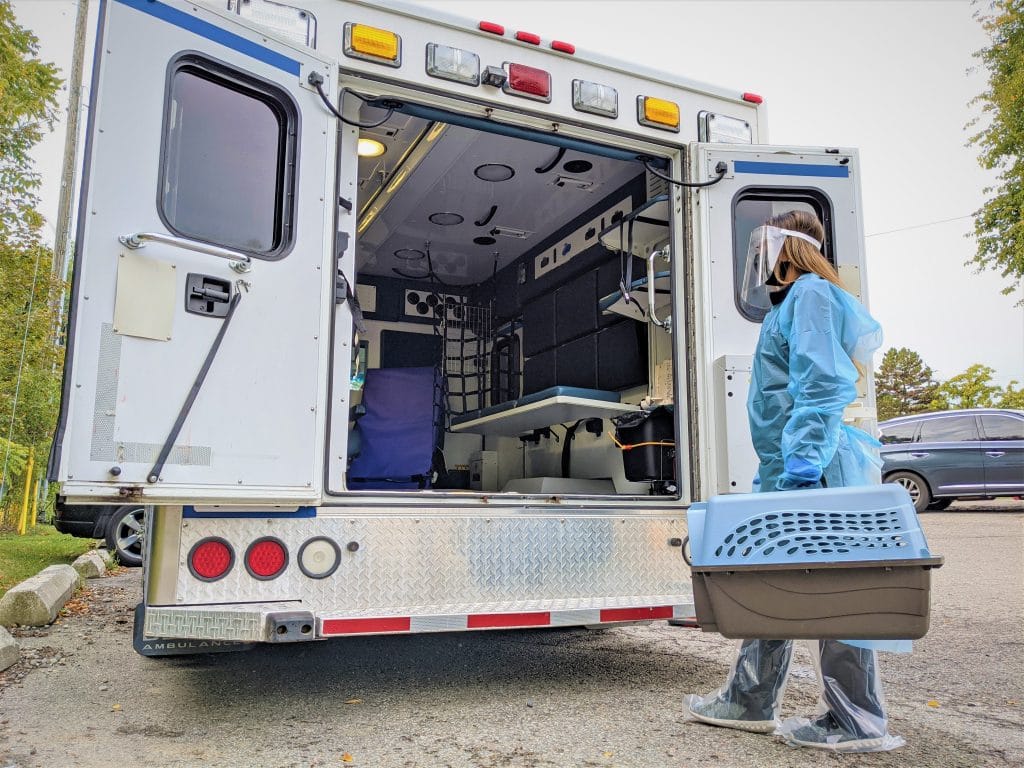
So, Where Does COVID Factor In?
COVID-19 has changed the way veterinarians engage with pet owners. For most veterinary clinics, pet owners are required to wait in their vehicles outside the hospital and are informed on the status of their pet by phone. Wait times can be very uncertain, as demands have increased on many veterinary service providers. This is exacerbated by the approach of winter and adverse weather conditions. To mitigate these stresses associated with veterinary access, simply book a return trip with us and let us shuttle your pet to and from their appointment. We will let you know when your pet has safely reached their veterinarian and make arrangements for the return trip when your loved one is ready to come back home- saving you stress and endless hours of waiting.
If you or someone in your household has recently been diagnosed with COVID-19 and leaving home with your pets is not an option, if you are in isolation for any reason, your pets may still be able to make that appointment. Our team of specialized RVTs and ACAs are prepared to offer contactless curbside and apartment hallway pick ups of pets in accordance with safety & social distancing protocols.
These include:
-
- Personal Protective Equipment on board
- Sanitizing equipment on board
- Minimum 2 meters between all staff and clients
- Virtual service requests
- Contactless payment
- Contactless virtual waiver
- Contactless pickup and drop off
- Pets transported only- no owners on board
- Single pet transports
- Sanitizing vehicle space and onboard equipment on drop off and pick up
- Contact tracing
We have all had to make compromises in our lives this year- pet care shouldn’t have to be one of them. As our society continues to adapt to deal with the social, economical, and environmental impact of the pandemic, we are here for you and your pets.
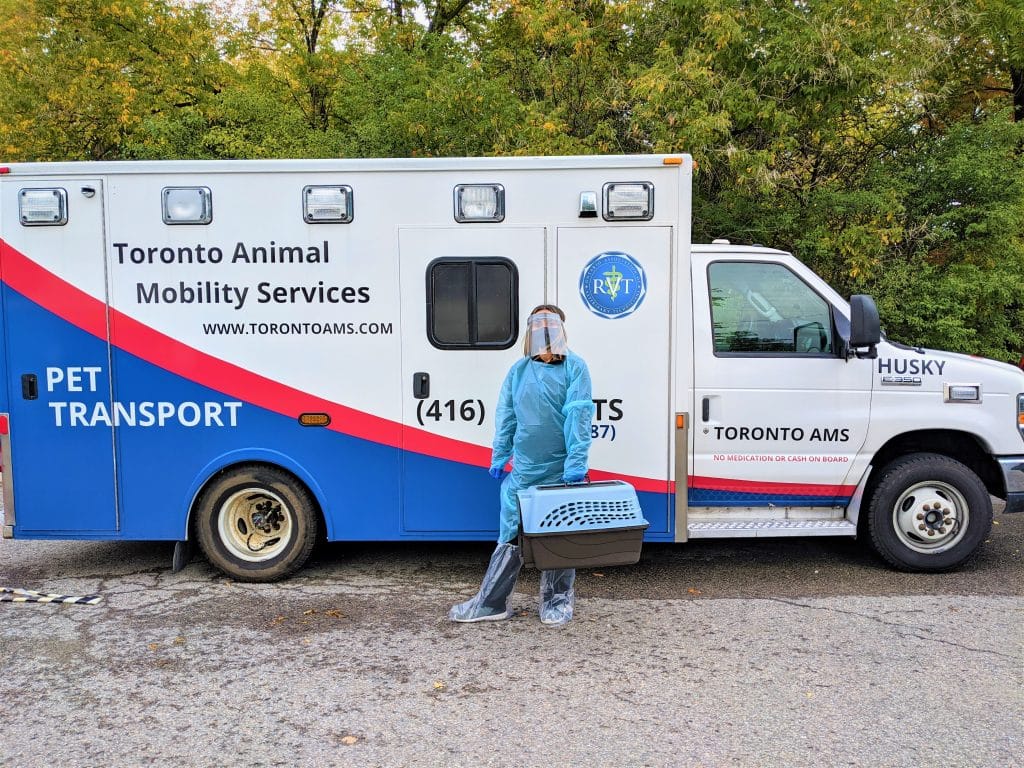
Sponsored Content

Toronto Animal Mobility Services is a professional, veterinary-trained pet transport service that helps pet owners get their pets to and from their vet appointments across the Greater Toronto Area. We are available Mondays to Fridays, from 7 AM to 8 PM, and are equipped to handle pets from moderate to serious clinical needs. We understand that veterinary visits can be stressful and are here to mitigate some of that stress while providing the best possible care to your companions during transit.
Call for a quote or pick up request at 416-449-PETS (7387) or book at www.torontoams.com
For other enquiries, contact [email protected]
- November, 11
- 4935
- Scribblin' Dogs
- More
A Day in the Life of an ICU Specialist
A DAY IN THE LIFE OF AN ICU SPECIALIST
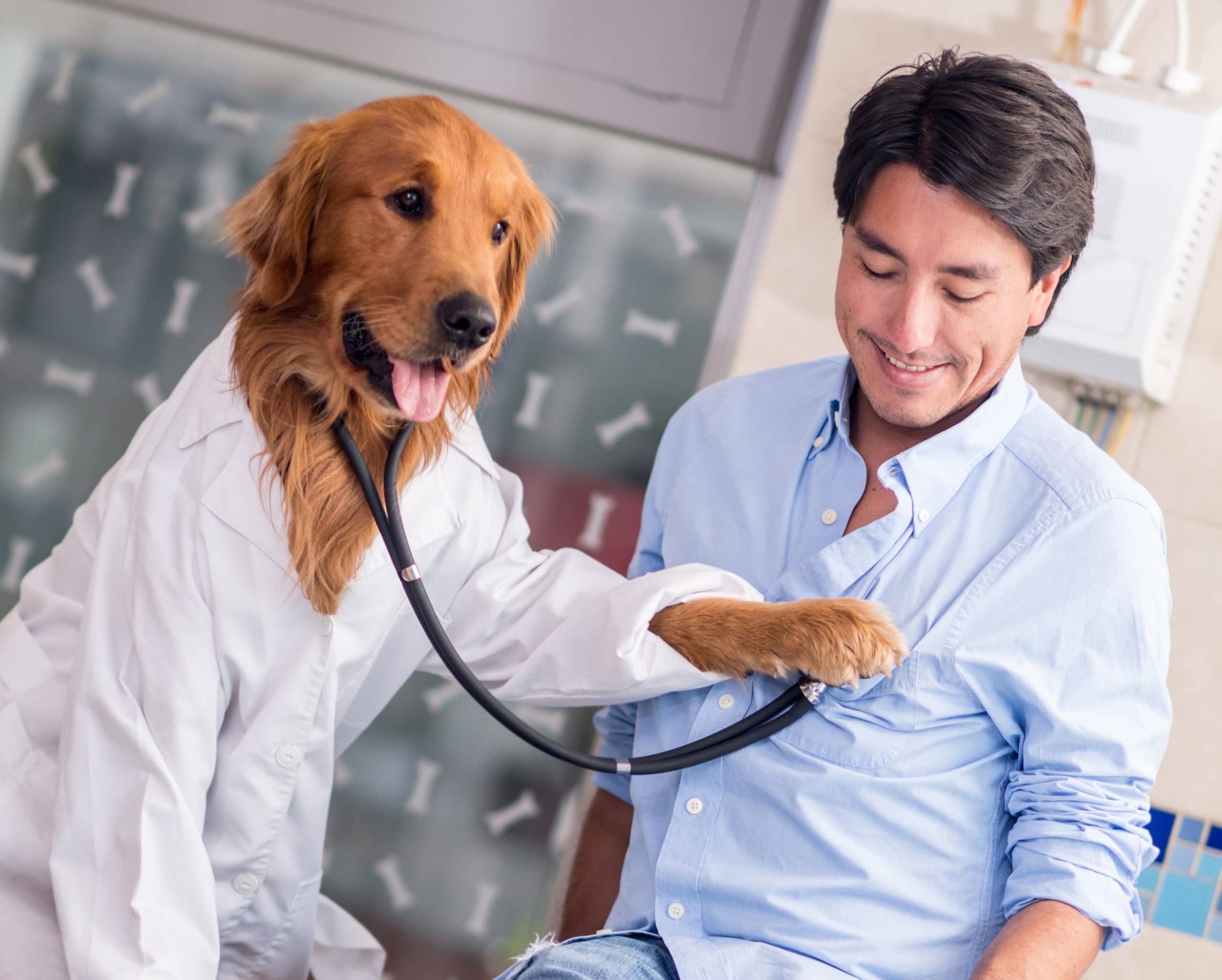
Written by Dr. Dawn Crandell,
DVM, DVSc, DAVCECC, CTC

I don my scrubs and stethoscope, and in the age of Covid-19, masked. I head into the ICU to see what awaits. The overnight nurses are finishing their shifts, tired and looking forward to a deserved quiet sleep – but first, details on how my patients progressed overnight.
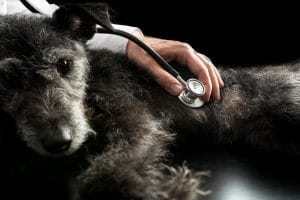
The scruffy black little terrier in the corner kennel is recovering from surgery; she suffered trauma to her belly and chest after being attacked by a big dog who escaped from the front door. She was seen and stabilized by our emergency service team, then assessed by our surgeon who agreed she needed emergency surgery. The anesthesiologist shepherded her safely through a tricky anesthesia. The surgeon carefully patched up her belly wall and put a tube in her chest to drain the infection and keep it free from air leaks, and then she was wheeled into the ICU for us to continue her care. When I left last night, she was on three different pain medications, oxygen and antibiotics and needed her chest tube monitored and emptied. My nurses report her oxygen levels are great, she was able to sleep and even wagged her tail when they approached; a great sign she is on the right track. I had put her on some anti-anxiety medications to relieve her separation anxiety and am pleased to see she is calm.
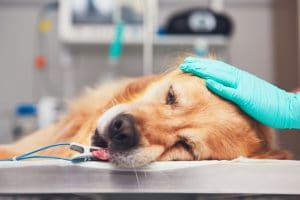
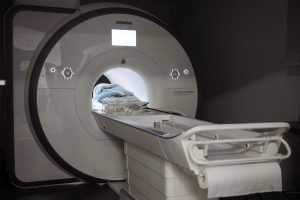
I see a sad looking Golden Retriever in the large kennel next door, a new case. The overnight emergency doctor comes to speak with me about her; her owners were worried because she was sluggish and quiet the day before, then collapsed on her walk. When the ER doctors saw her late last night, they noted she had pale gums and a high heart rate. They used a portable ultrasound machine to look in her belly suspecting some bleeding in there and they were right. They checked her blood to make sure she didn’t have a clotting problem, hoping against hope that maybe she did. Because you see, a rat poison problem that prevents blood from clotting is something we can fix. But her clotting times were normal. So instead we fear she may have a common tumour called hemangiosarcoma on her spleen or liver that is slowly but steadily oozing into her belly.
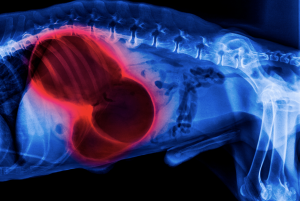

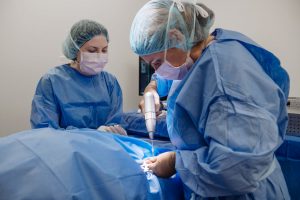
She got a blood transfusion which helped brighten up, but she needs a full ultrasound or CT scan this morning to look for cancer. I don’t relish the difficult conversation I will have to have with her owners, explaining to them this could be a really tough problem for their beautiful girl. The ER doc tells me the dog is owned by a lovely family with an 8 year old boy with developmental delays; the dog means everything to him, and my heart breaks more than a little about the potential bad news they might face.
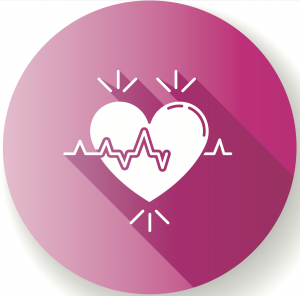
My attention turns to the little white poodle in another kennel, hooked up to an ECG which is reading a dangerously fast heart rate of 280. The poodle’s muzzle is blackened with activated charcoal, a telltale sign of treatment for toxin ingestion. Sure enough, this little monkey came in last night because he chowed down on a K-cup pod he stole from the garbage and had enough caffeine in his system to power a tower full of groggy office-workers. I reviewed his case quickly and ordered an increase in propranolol, the medication used to counteract the caffeine until he can get rid of it from his body. He was newly adopted by this first-time dog owner, and she had just received a hard lesson on how a dog can get into trouble faster than a toddler on steroids.
There is a cat who can’t breathe and has nasal oxygen – he hates it and keeps ripping it out. I adjust the rate, so it is more comfortable for him, order some sedatives and make a mental note to review his case quickly. The dog who ate a barbeque skewer that punctured through his stomach, then worked its way up to his chest is finally well enough to go home after an extensive hospital stay. The seizuring patient had a good night with no more seizures, and his IV medication is being weaned off successfully. Fingers crossed he would hold for the day on his oral medications.
The oncoming ICU nurses get busy with their charges. The animal care attendants start taking patients out for walks, providing food and water and cleaning up the sometimes perpetually soiled kennels. I am amazed how they just laugh and exclaim “Really??!!” When a patient soils the fresh clean bed, they just lovingly made for them. I thank my stars that every one of the staff here really does love the animals and does the dirty work because they care that our patients stay clean, dry, warm and comfy. My hard-earned medical expertise is worth nothing to my patients if they are cold, hungry or sitting on wet, dirty laundry.
I settle down to my routine of reading the overnight notes, doing physical exams, adjusting medications and treatments, ordering labwork, reviewing new results and calling owners, who I know are waiting anxiously at home for some word about their loved pet.
I chat with the surgeon about what cases may need to come into the ICU that day ¬¬– get the lowdown from the overnight ER docs about any difficult cases they admitted that might need my help or advice, and manage the stream of bids for my attention; referring vets looking for updates on the patients they sent over, some advice to a vet who is trying to manage a tough case in Northern Ontario, far away from a referral hospital like ours, owners wanting updates. It’s 2:00 somehow, and I realize lunchtime came and went. I slip outside in the sunshine for a quick bite and quiet moment, away from overhead pages and beeping alarms, letting the nurses know I am just around the corner if a crisis arises.

The afternoon passes in a blur. The caffeinated dog is taking a while to recover and I need to reassure the owner all will be well but in the fullness of time; the Golden’s owners need lots of attention to help them through some difficult decisions with what tests to pursue and various possible outcomes; the cat with breathing trouble needs radiographs read, and I need to beg the cardiologist to try to squeeze him in his already overstuffed schedule. A patient comes in from surgery for some close monitoring after a rocky anesthesia and we must shuffle some patients around to make space.
The best part of my afternoon is sending home the dog who ate the barbeque skewer. We took him on a victory tour of the hospital so the numerous people involved in his care could say goodbye. He is a poster child for why I love being on the team in a good referral hospital. He needed everything we had, from a competent overnight ER service, ready to take him in at all hours, a high-tech CT scan to find the skewer that was not visible on plain radiographs or ultrasound, an anesthesia service that could deftly managed his precarious sick physiology, a great surgeon who could handle whatever surgical surprise awaited in his chest and belly and fantastic post-operative care with attention to all the essential details provided by the ICU team I head. We all need a paycheque, but seeing that dog’s exuberant joy on catching sight of his owners, and witnessing their tearful happy grins on finding their furry friend restored to health is, as they say in the MasterCard commercials, priceless.
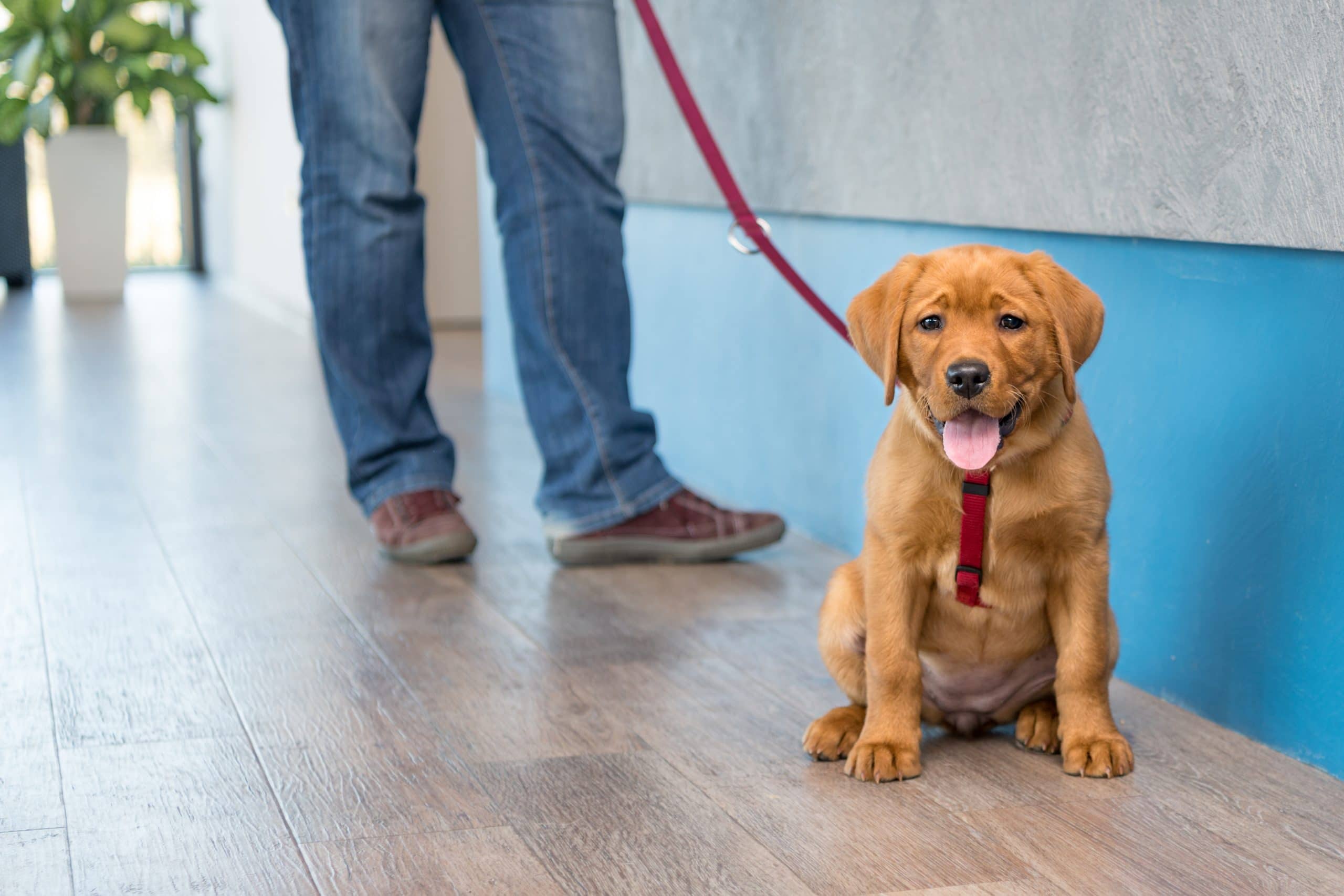
About The Company
Animal Health Partners Toronto is a new veterinary emergency and specialty hospital modeled after best practices in human medicine. Lead by a team of highly qualified veterinary specialists, Animal Health Partners Toronto Emergency and Specialty Hospital is bringing the world’s best practices of private human healthcare to veterinarian care.

The technical proficiency and medical equipment at Animal Health Partners equals or exceeds that found in sophisticated human hospitals.
Animal Health Partners provides the highest-quality Veterinarian Services in Toronto. Our specialists combine their collective knowledge and skill in the treatment of complex or multifaceted cases. We serve as an extension of your family veterinarian and provide exceptional specialty care by treating our patients as if they were our own pets.
Our Core Values
Quality
At the root of all we do at Animal Health Partners is a commitment to the highest quality of veterinary care. This means that the diagnostic tests we run and the treatments we provide are informed by the best available scientific evidence and implemented by the most highly qualified veterinarians and staff.
Compassion
We understand that the experience of illness and injury can be painful and scary for pets and their owners. We strive to reduce discomfort as much as possible using gentle handling techniques, appropriate pain-management, stress-reducing design features, non-invasive interventions and a continuous emphasis on empathic patient-centered care.
Service
Intrinsic to our goal of providing the highest quality of medicine is providing efficient, courteous, attentive and responsive service to the owners and referring veterinarians that have entrusted us with the care of their pets and patients.
Innovation
Medicine is rapidly evolving. Our technologically advanced institution is equipped to employ and pioneer the most cutting-edge diagnostic and treatment modalities available in veterinary medicine with the goal of improving the quality of care for all patients.
Partnership
High-quality care and optimal patient outcomes rely not on any one individual but on the strength of the connections between many. Ensuring the best possible outcomes for our patients means creating solid partnerships with their owners and referring veterinarians. It also means establishing relationships more broadly with the community, the human medical field and with industry.
- October, 22
- 4949
- Letter from the vet
- More
Do Dogs Get Alzheimer’s?
DO DOGS GET ALZHEIMER’S
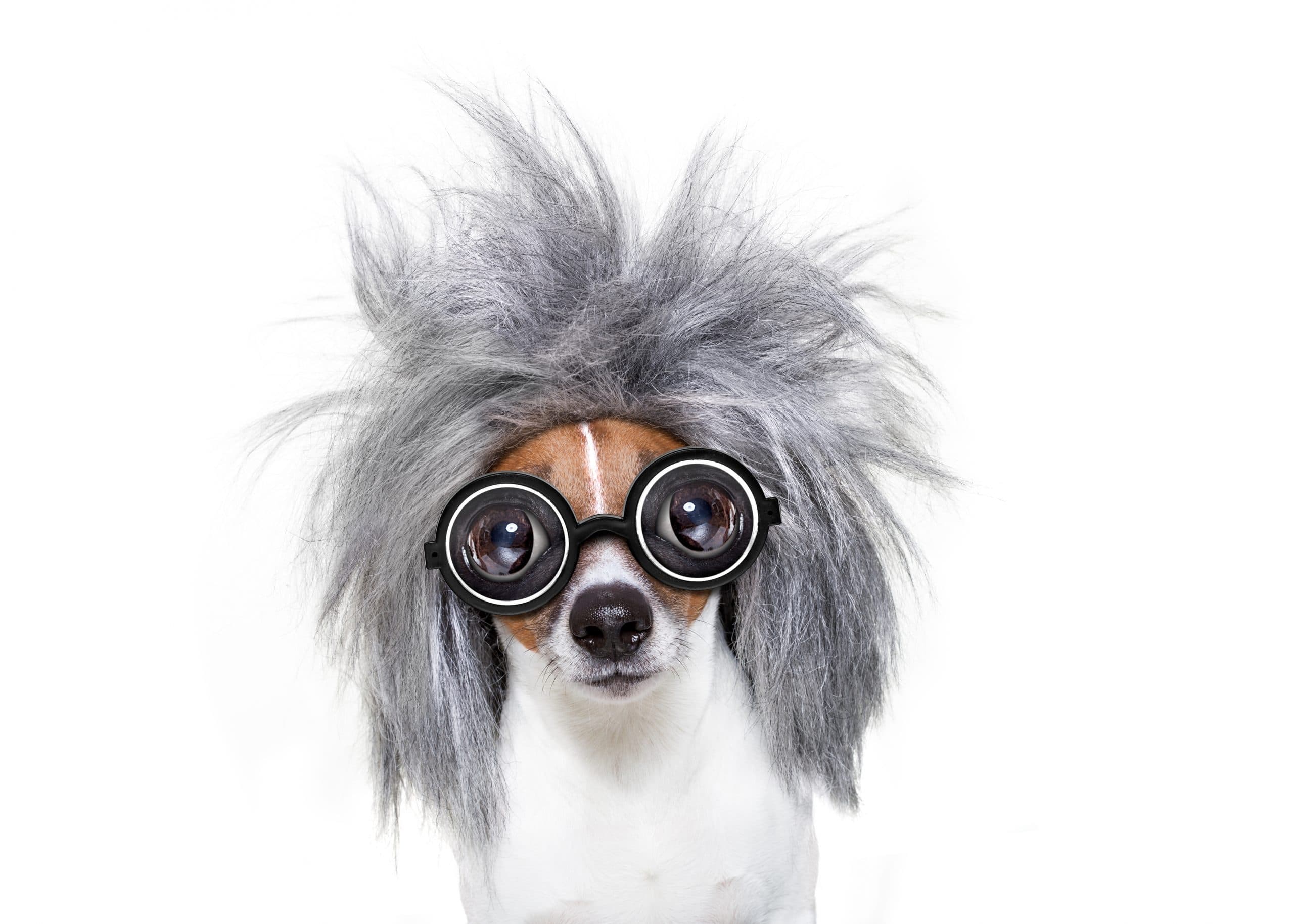
Written by Dr. Alison Little,
DVM Residency trained ACVIM

People often wonder if their elderly dog is developing Alzheimer’s disease when they notice that they are slowing down and appearing more forgetful. Many people will say this with a chuckle, thinking they are being silly ascribing a human condition to their canine companion, but in reality, they may be correct.
Elderly dogs, usually over 8 years of age, can develop canine cognitive dysfunction syndrome. In fact, it is reported that 14-35% of dogs over 8 years of age are affected by it. This syndrome is very similar to Alzheimer’s disease, with similar brain changes noted. Also, just as with Alzheimer’s disease, we are not really sure what causes it.
Signs of canine cognitive dysfunction syndrome can initially be very subtle and may worsen over time.
Some signs of canine cognitive dysfunction syndrome include:
- Disorientation (e.g. going to the wrong side of the door and/or getting stuck in corners)
- Having trouble recognizing familiar people
- Changes in normal social relationships (e.g. being more or less clingy, being more sociable or irritable)
- Waking up in the middle of the night or sleeping more during the day
- Becoming anxious
- Forgetting commands
- House soiling
- Abnormal vocalization
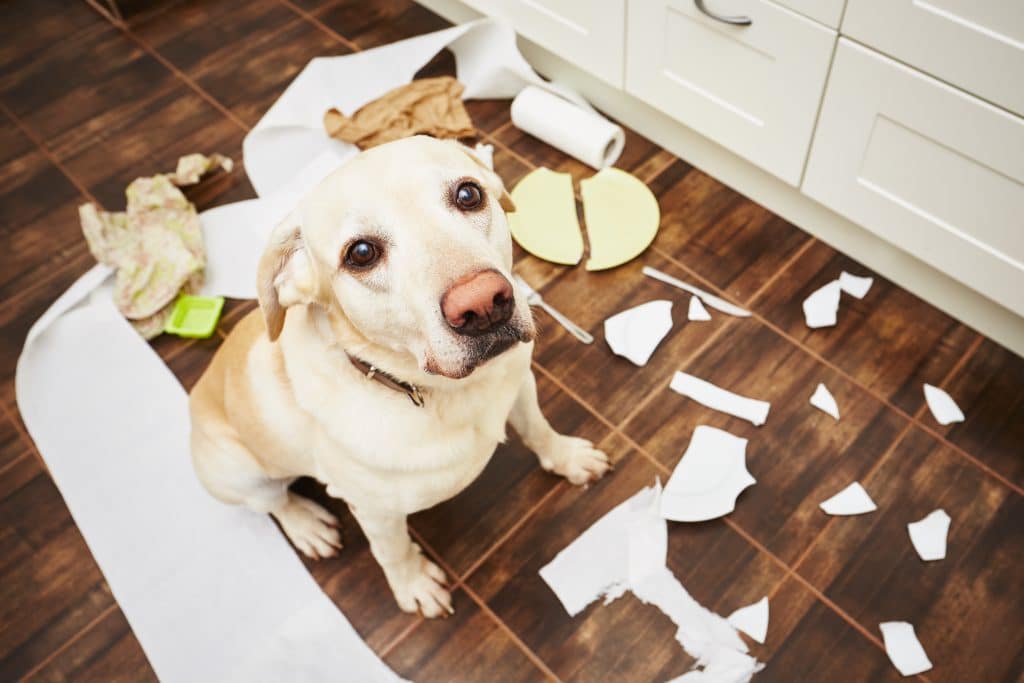
Canine cognitive dysfunction syndrome can be highly suspected based on history alone. However, we often perform some tests, like blood work and an MRI of the brain, to make sure that the changes are not due to another reason.
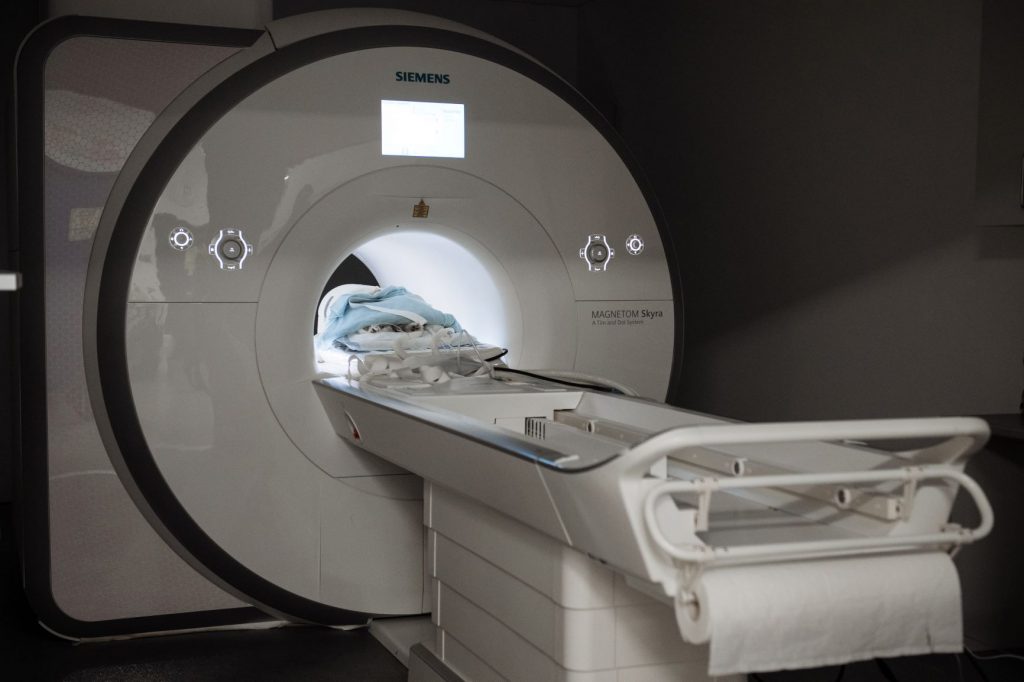
Unfortunately, just as with Alzheimer’s disease, there is no known cure for canine cognitive dysfunction. There are, however, some interventions that can help improve clinical signs and slow the progression of the disease. Some drugs have been shown to be helpful in improving cognitive function and in slowing down the progression of the disease. There are also some diets that are specially designed to help improve cognitive function in dogs. Finally, environmental enrichment has also been shown to help. Introducing new toys, going on walks to new places and playing with your dog more can help to improve their cognitive ability. It is always best to discuss with your veterinarian on what specific strategies you can take to help your dog.
If you are ever concerned that your older dog may be showing signs of canine cognitive dysfunction and want to chat about further tests or treatment options to help slow down the progression of disease, we are always here to help!
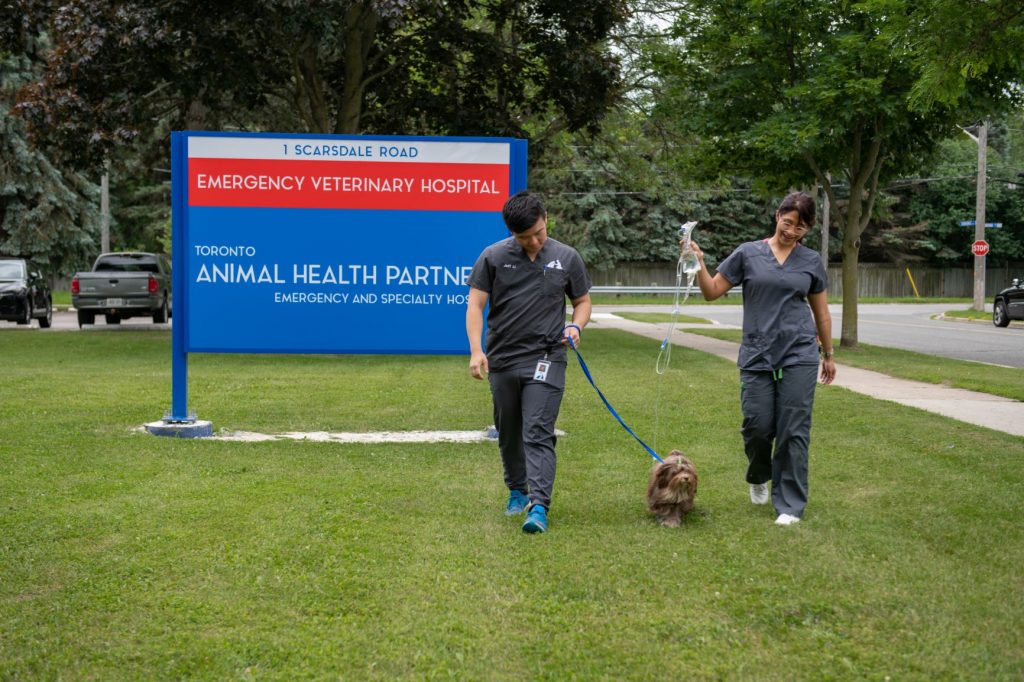
About The Company
Animal Health Partners Toronto is a new veterinary emergency and specialty hospital modeled after best practices in human medicine. Lead by a team of highly qualified veterinary specialists, Animal Health Partners Toronto Emergency and Specialty Hospital is bringing the world’s best practices of private human healthcare to veterinarian care.

The technical proficiency and medical equipment at Animal Health Partners equals or exceeds that found in sophisticated human hospitals.
Animal Health Partners provides the highest-quality Veterinarian Services in Toronto. Our specialists combine their collective knowledge and skill in the treatment of complex or multifaceted cases. We serve as an extension of your family veterinarian and provide exceptional specialty care by treating our patients as if they were our own pets.
Our Core Values Quality
At the root of all we do at Animal Health Partners is a commitment to the highest quality of veterinary care. This means that the diagnostic tests we run and the treatments we provide are informed by the best available scientific evidence and implemented by the most highly qualified veterinarians and staff.
Compassion
We understand that the experience of illness and injury can be painful and scary for pets and their owners. We strive to reduce discomfort as much as possible using gentle handling techniques, appropriate pain-management, stress-reducing design features, non-invasive interventions and a continuous emphasis on empathic patient-centered care.
Service
Intrinsic to our goal of providing the highest quality of medicine is providing efficient, courteous, attentive and responsive service to the owners and referring veterinarians that have entrusted us with the care of their pets and patients.
Innovation
Medicine is rapidly evolving. Our technologically advanced institution is equipped to employ and pioneer the most cutting-edge diagnostic and treatment modalities available in veterinary medicine with the goal of improving the quality of care for all patients.
Partnership
High-quality care and optimal patient outcomes rely not on any one individual but on the strength of the connections between many. Ensuring the best possible outcomes for our patients means creating solid partnerships with their owners and referring veterinarians. It also means establishing relationships more broadly with the community, the human medical field and with industry.
- September, 18
- 5097
- Letter from the vet
- More
COMMON NEUROLOGICAL PROBLEMS IN VETERINARY MEDICINE
COMMON NEUROLOGICAL PROBLEMS IN VETERINARY MEDICINE
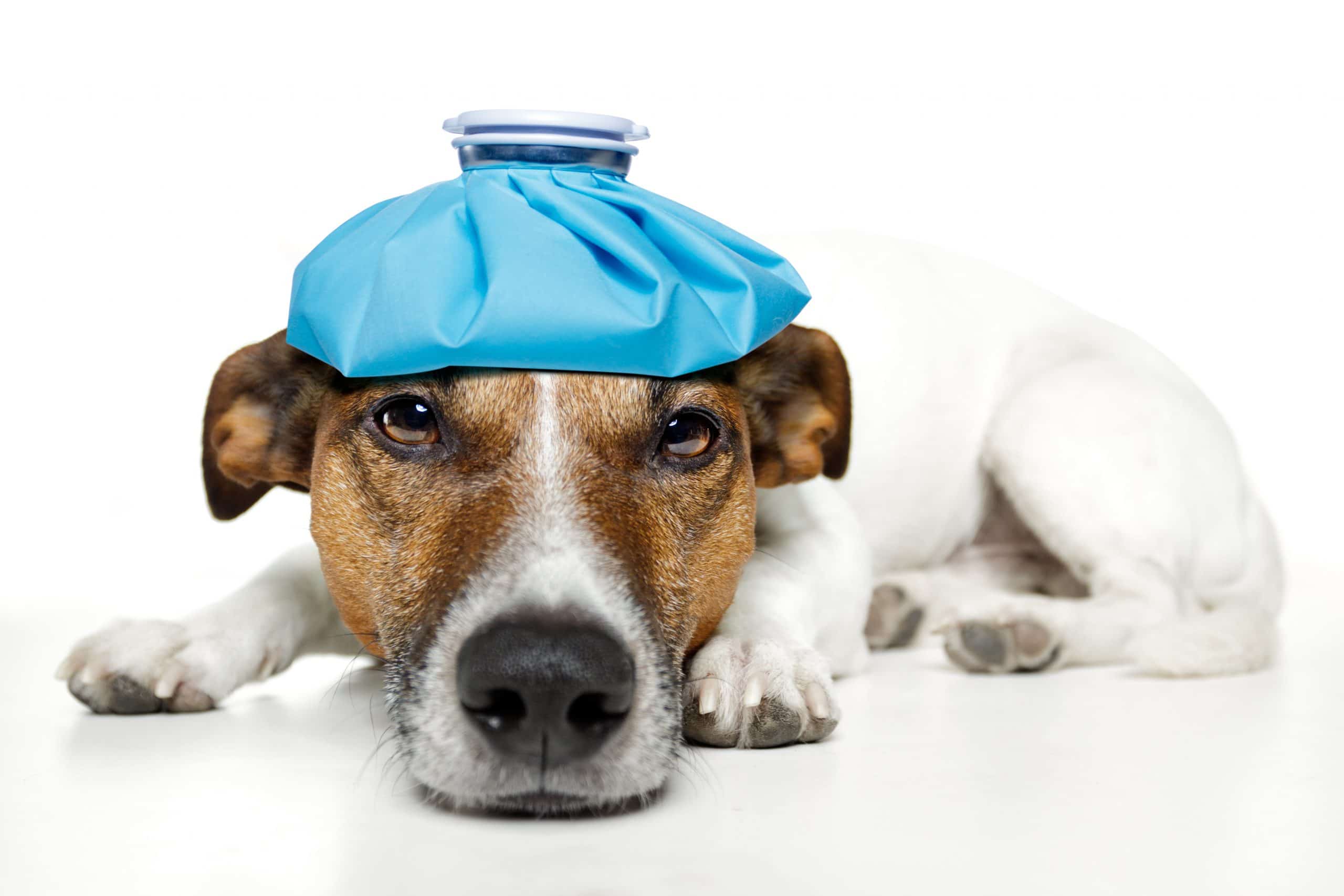
Written by Dr. Greg Kilburn,
DVM, DACVIM, (Neurology)

The two most common problems a veterinary neurologist/neurosurgeon sees are seizures and back pain which can lead to an inability to walk. A neurologist not only has the tools to diagnose these problems (MRI) but also has the knowledge and ability to treat these problems. Your veterinarian may send you to a specialty hospital or you may need to seek emergency care if your pet experiences either of these problems when your veterinarian is closed”.
Seizures
Seizures most commonly are due to epilepsy where there are seizures without an identifiable underlying disease process. Other causes for seizures include brain diseases such as brain tumors, encephalitis or stroke. Low blood sugar or calcium and some intoxications can also cause seizures.
They commonly occur while sleeping and can involve violent paddling, excessive salivation, urination and defecation and loss of consciousness. Contrary to popular belief, dogs will not choke on their tongue and you should NEVER put your hand in their mouth to avoid being bit. After a seizure, patients are temporarily confused. It can help to soothe or gently restrain them to keep them safe but be cautious as occasionally in this ‘post ictal” phase, they may not recognize you and can sometimes behave aggressively.
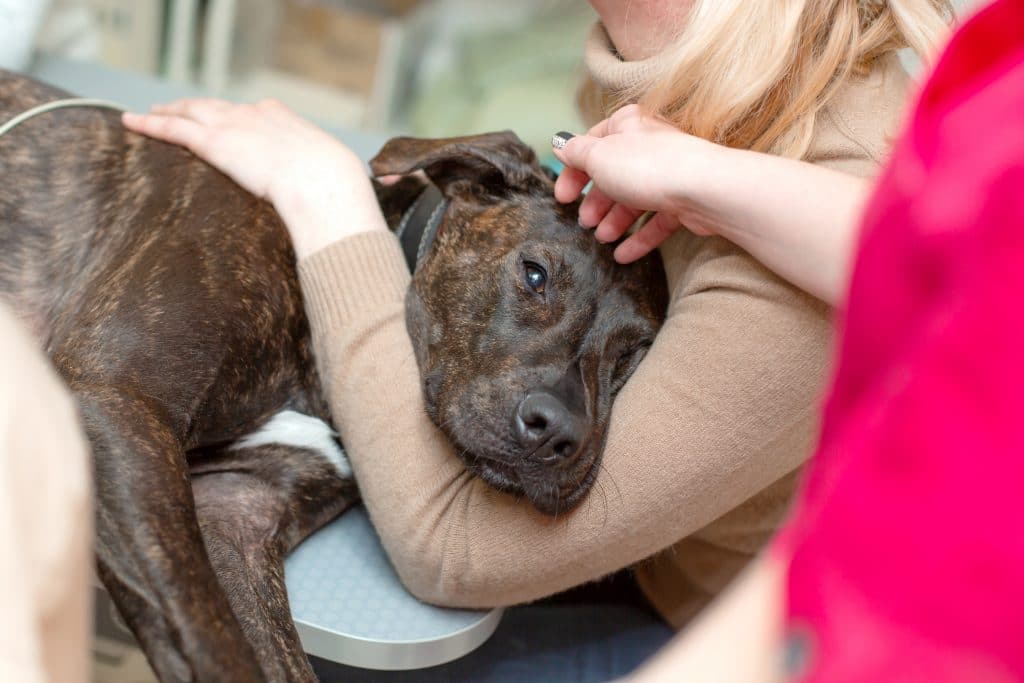
Treatment usually involves daily medications (often 2 or 3 times a day) and carries drawbacks such as cost, side effects and the need to keep a rigid dosing schedule. As with anything, treatment shouldn’t be worse than the disease. If seizures are infrequent or mild (more than a few months between seizures) it may be best to monitor without medications. If seizures are more than every 2 months however, medications should be started. Medications are also recommended for when dogs have “cluster seizures”, meaning more than one in 24 hours.
Seizures sometimes require seeking emergency medical attention. If a dog has 3 or more seizures in 24 hours or any seizure lasting more than 5 minutes, emergency treatment should be sought.
Intervertebral Disk Disease (IVDD)
This is the most common cause of spinal cord dysfunction in dogs and occurs when the disk that lives between each of the vertebrae herniates or ruptures leading to compression of the spinal cord and interruption of the signals travelling between the brain and the limbs. A herniated disk can happen at any time and almost never is due to an injury or trauma, but rather happens in dogs with a genetic predisposition. The most common breeds are Dachshunds and French Bulldogs, but most small breed dogs and some large breed dogs can also develop disk herniations.

Symptoms can range from mild (back pain) to severe (complete paralysis). Sometimes symptoms are obvious (dragging the rear limbs) and other times less obvious (hunched back, reluctance to jump, reclusiveness or spontaneous yelping), Medical management with rest and pain medications can be effective in half the cases, whereas surgery is successful in 95% or more of the cases.
Diagnostic testing with MRI or CT is necessary to confirm the diagnosis and guide treatment decisions. Medical management can be reasonable when symptoms are mild but if a dog becomes uncoordinated or weak in the back legs or loses the ability to walk, immediate veterinary attention should be sought. Veterinary neurologists can assess patients to determine if further testing should be performed and then, if necessary, interpret the tests and perform surgery. Even paralyzed dogs have a good chance for recovery if treated in a timely manner.
About The Company
Animal Health Partners Toronto is a new veterinary emergency and specialty hospital modeled after best practices in human medicine. Lead by a team of highly qualified veterinary specialists, Animal Health Partners Toronto Emergency and Specialty Hospital is bringing the world’s best practices of private human healthcare to veterinarian care.

The technical proficiency and medical equipment at Animal Health Partners equals or exceeds that found in sophisticated human hospitals.
Animal Health Partners provides the highest-quality Veterinarian Services in Toronto. Our specialists combine their collective knowledge and skill in the treatment of complex or multifaceted cases. We serve as an extension of your family veterinarian and provide exceptional specialty care by treating our patients as if they were our own pets.
Our Core Values
Quality
At the root of all we do at Animal Health Partners is a commitment to the highest quality of veterinary care. This means that the diagnostic tests we run and the treatments we provide are informed by the best available scientific evidence and implemented by the most highly qualified veterinarians and staff.
Compassion
We understand that the experience of illness and injury can be painful and scary for pets and their owners. We strive to reduce discomfort as much as possible using gentle handling techniques, appropriate pain-management, stress-reducing design features, non-invasive interventions and a continuous emphasis on empathic patient-centered care.
Service
Intrinsic to our goal of providing the highest quality of medicine is providing efficient, courteous, attentive and responsive service to the owners and referring veterinarians that have entrusted us with the care of their pets and patients.
Innovation
Medicine is rapidly evolving. Our technologically advanced institution is equipped to employ and pioneer the most cutting-edge diagnostic and treatment modalities available in veterinary medicine with the goal of improving the quality of care for all patients.
Partnership
High-quality care and optimal patient outcomes rely not on any one individual but on the strength of the connections between many. Ensuring the best possible outcomes for our patients means creating solid partnerships with their owners and referring veterinarians. It also means establishing relationships more broadly with the community, the human medical field and with industry.
- August, 26
- 5006
- Letter from the vet
- More
REDUCING STRESS AT THE VETS
REDUCING STRESS AT THE VETS

Written by Dr. Dawn Crandell,
DVM DVSc, DAVCECC, CTC
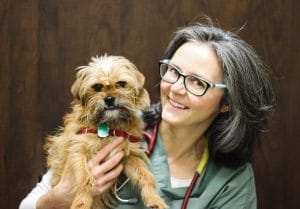
Do you put off taking your pet to the vet because you dread how stressful it will be? You aren’t alone. A study done in 2011 revealed that an astounding 58% of cat owners and 38% of dog owners report their pet detests going to the vet. It’s 2020 now but I doubt things have changed much. Pets quickly learn that vet offices are places where scary things happen (restraint, injections, barking dogs, high tables with unsteady footing, separation from their trusted person etc.) As a vet, it distresses me to know that most of my patients cower in terror at my approach and tremble with fear at the sight, sounds and smell of a vet clinic. Owners are embarrassed their dog or cat growls, bites, hides or refuses to greet me, but I know these pets are scared out of their wits and their unfriendly behaviour is perfectly reasonable; they desperately want to get away or make me go away. I worry too, that a lot of pets don’t come in to see us until the 11th hour of an illness because their owners don’t want to face the distress of a vet visit.
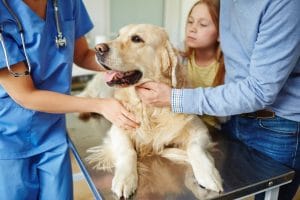
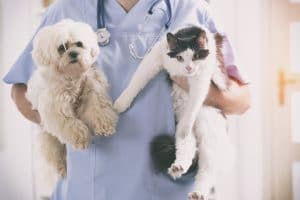
Creating a stress-free experience starts with veterinarians and owners making sure puppies and kittens have great experiences in those first several vaccine visits and veterinary staff being careful to avoid causing fear or pain in subsequent visits. If that path was not taken and your pet is a basket-case in the vet office, here are two ways to make it better. Reducing fear is a welfare issue; avoiding a frightening experience is worth all your effort.
Make The Cat Carrier a Source of Comfort
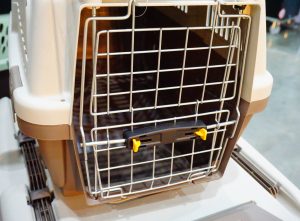
If you have a cat, likely the mere sight of the carrier will cause your cat to cram himself into the smallest, darkest, dustiest corner of your house because the carrier is a tip-off a trip to the vet is in the cards. You can make the carrier a source of comfort rather than a terrifying omen by leaving it out in your living space all the time. Put a comfy blanket in there, toss in some cat nip if your cat likes that, throw treats into it 3-4 times per day. At first, take the top off it if you can, and let it be a comfy bed. It will take a while, but eventually it will become as innocuous as a piece of furniture, and if you keep putting treats on and around it, your cat will come to like it. Once he is showing no fear of it and settling into the bed, put the top back on, keep tossing treats in a few times a day, and let your cat use it as a handy bed or cozy den. If you have left it out for a couple of months and your cat is still afraid of it, try a different type or style of carrier that doesn’t come preloaded with associations with the vet hospital. Use the power of Pavlovian conditioning to get him to LOVE that carrier – put toys, treats, catnip and other goodies in the carrier frequently. Once he loves it, putting him in the carrier to take him to the vet is a much less stressful experience.
Make the Vet Clinic a Place Where Great Things Happen
If you live near enough to the vet clinic to walk by it with your dog, make it part of your regular circuit. If you usually drive to your vet hospital, take lots of intentional side-trips there and walk around the parking lot or near the front door with your dog. Once there, use your happy silly voice and give your dogs some really great treats (don’t be cheap here; bring out the real bacon, leftover roast chicken, or something equally amazing your dog would never otherwise get.) If you do this every time, she will develop a bit of happy anticipation to be near the vet office doors. If your dog is too upset to take treats near the vet office doors, walk or drive farther away. Try across the street or 2 doors down. Once she is happy taking treats there, try a little closer on your next visit until you can get to and into the front door with no problem.


These are just two of many strategies you can use to reduce stress at the vet hospital. Ask your vet team to join you in your efforts to make the visit more fun and less scary for your pet. Many vets are thinking a lot more about the deleterious effects of fear and stress on their patients these days and would be happy to have you onside in the effort. Just like in people, health encompasses minds as well as bodies, and we need to look after both.
About The Company
Animal Health Partners Toronto is a new veterinary emergency and specialty hospital modeled after best practices in human medicine. Lead by a team of highly qualified veterinary specialists, Animal Health Partners Toronto Emergency and Specialty Hospital is bringing the world’s best practices of private human healthcare to veterinarian care.

The technical proficiency and medical equipment at Animal Health Partners equals or exceeds that found in sophisticated human hospitals.
Animal Health Partners provides the highest-quality Veterinarian Services in Toronto. Our specialists combine their collective knowledge and skill in the treatment of complex or multifaceted cases. We serve as an extension of your family veterinarian and provide exceptional specialty care by treating our patients as if they were our own pets.
Our Core Values
Quality
At the root of all we do at Animal Health Partners is a commitment to the highest quality of veterinary care. This means that the diagnostic tests we run and the treatments we provide are informed by the best available scientific evidence and implemented by the most highly qualified veterinarians and staff.
Compassion
We understand that the experience of illness and injury can be painful and scary for pets and their owners. We strive to reduce discomfort as much as possible using gentle handling techniques, appropriate pain-management, stress-reducing design features, non-invasive interventions and a continuous emphasis on empathic patient-centered care.
Service
Intrinsic to our goal of providing the highest quality of medicine is providing efficient, courteous, attentive and responsive service to the owners and referring veterinarians that have entrusted us with the care of their pets and patients.
Innovation
Medicine is rapidly evolving. Our technologically advanced institution is equipped to employ and pioneer the most cutting-edge diagnostic and treatment modalities available in veterinary medicine with the goal of improving the quality of care for all patients.
Partnership
High-quality care and optimal patient outcomes rely not on any one individual but on the strength of the connections between many. Ensuring the best possible outcomes for our patients means creating solid partnerships with their owners and referring veterinarians. It also means establishing relationships more broadly with the community, the human medical field and with industry.
- July, 7
- 4851
- Letter from the vet
- More
VETERINARY MEDICINE IN THE AGE OF COVID-19
VETERINARY MEDICINE IN THE AGE OF COVID-19
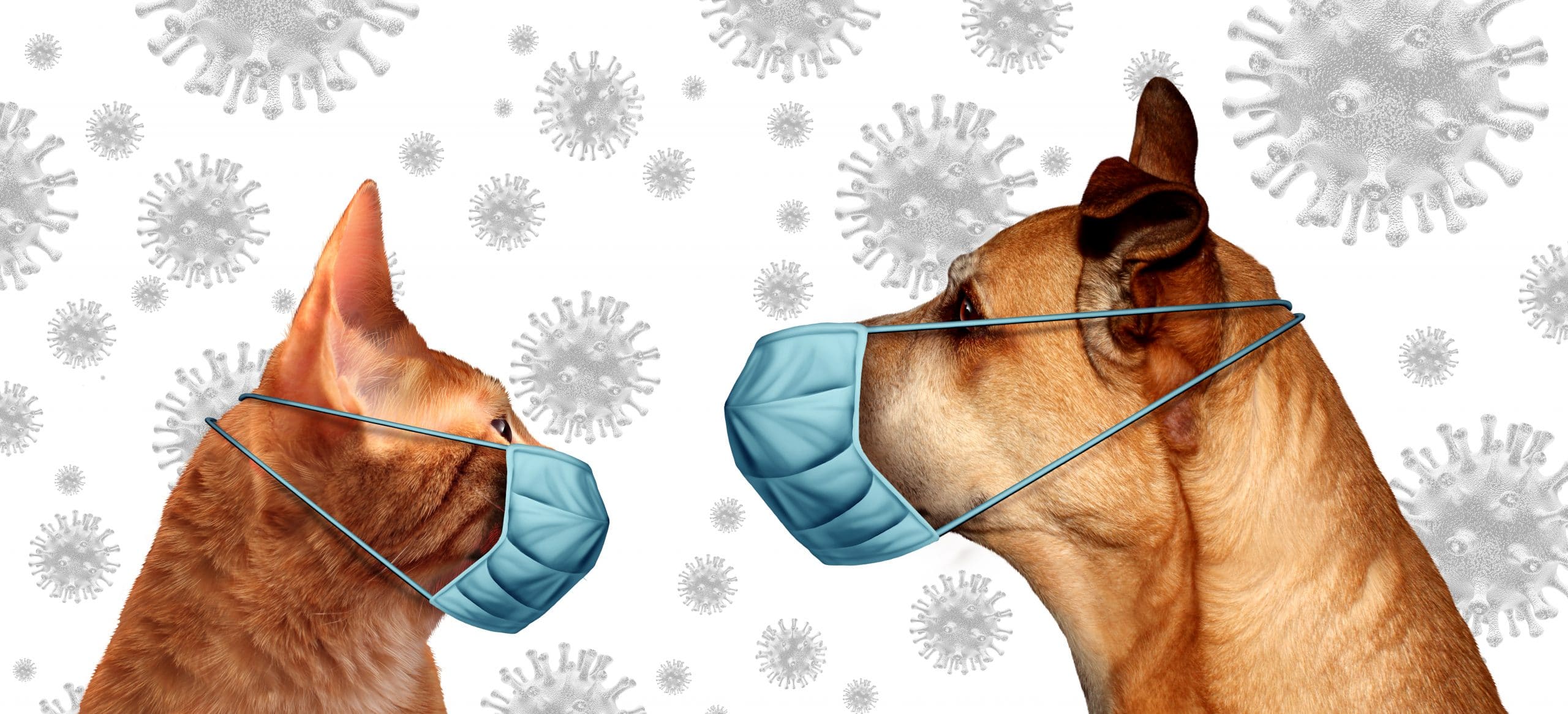
Written by Dr. Barb Bryer,
DVM Head of Emergency Medicine

I can honestly say that I never expected to live through, let alone work through, a global pandemic. Given that I never really spent much time imagining what it would be like. This remains, even three months later, a bit of a surprise for all of us. Like most industries that were deemed essential, we watched as the middle of March approached like we were approaching an iceberg. We gaped in awe at the size of it as it appeared in front of our ship. Then we were forced to swing our ship rapidly away and avoid hitting the massive underwater menace that threatened to slice a hole in our vessel.
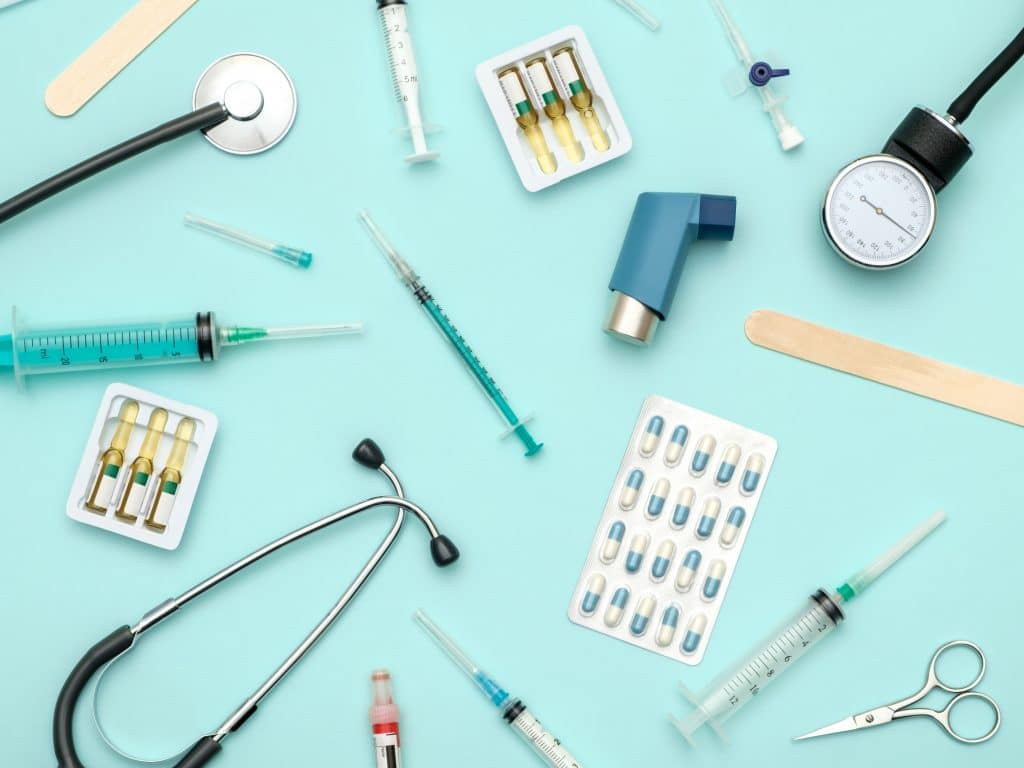
We quickly evaluated and stocked our shelves with medications, surgical supplies and personal protective equipment. The normal stocking procedures however could not be followed as we needed to be mindful of the requirements in the human medical field. We calculated exact numbers of surgical masks – revamped our anesthetic protocols to ensure that our emergency needs did not risk the potential needs in the human hospitals.
We rewrote standards of care to use alternatives that had been deemed second choice items due to their cost or comfort to ourselves. In some cases, we loaned out vital equipment to local hospitals in case the COVID caseload required more ventilators than their ICUs had. We never compromised on patient care.
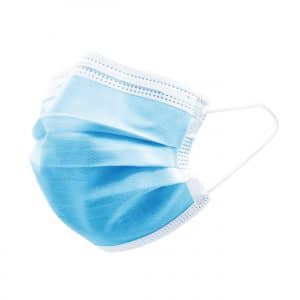
We revised our own schedules to ensure that the hospital was staffed at all times and with the same services but with fewer staff members in the facility at a time. We started working alternate hours to prevent overlapping. We held Zoom rounds. We talk loudly (but not moistly) through our masks and from 6 feet away. We duck into rooms and alternate hallways to let teammates pass by. We are working longer hours in most cases.
We called owners and cancelled “elective surgeries.” We counselled on alternative management techniques, and with medications to help soothe the aching knee of a geriatric golden retriever – until our restrictions and supplies allowed us to reschedule needed surgery.
We performed telemedicine, often for the first time, and tried to discern if the wound was healing well or not based on the blurry picture you managed to get while your cat tried to squirm away. We imitated a collapsing trachea on the phone so that you could tell us if that is what your Pomeranian sounded like when he woke you this morning.
We have learned all makes and models of cars and understand now that beige and tan are the same colour. We try not to startle you when we approach, and you are looking down or adjusting the air conditioning. We smile with our eyes over our masks as we take your dog’s leash at arms-length and try to reassure both of you that we will take good care of your pet.
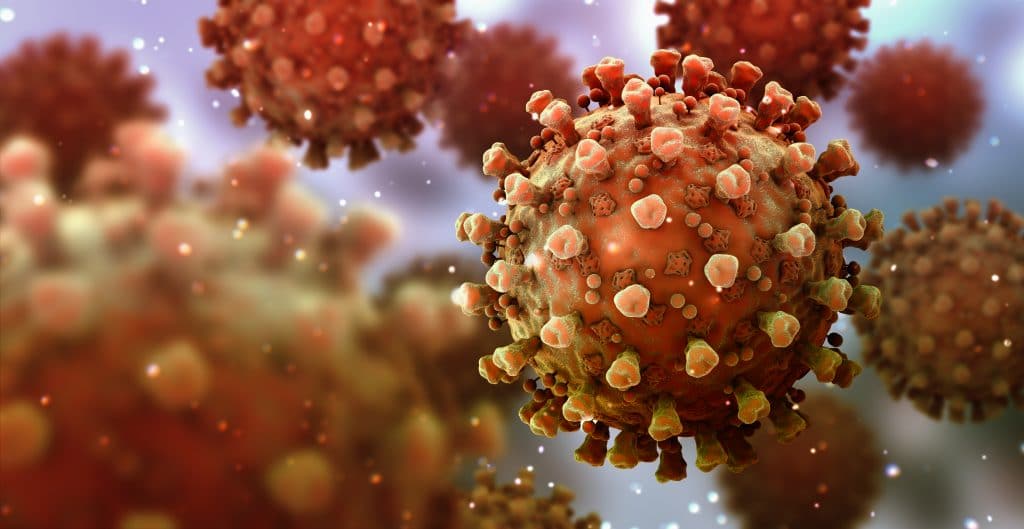
We clean. We clean your leashes and in some cases your pet if there are concerns about COVID in your household. We clean our hands until they are bleeding. We clean keyboards and telephones to the point that we are replacing them as they short out. We change out of our clothes before we go home.
We miss you. We miss witnessing and sharing the bond that you have with your pet. We miss hearing your comforting words as we meet your cat or your dog for the first time. We wish that you could see how we give your dog as many treats as they want so that they aren’t scared or how we sit quietly with our cat until they come out of the carrier on their own. We wish that we could see your face and read your body language as we impart vital information to you about your pets’ health. We wish that you could visit your dog to see if he will eat for you.
We are here. We are doing our best. We really appreciate your patience right now. It is not easy, but I think we are doing a great job of getting through this together. Sorry if I gave your dog too many treats.
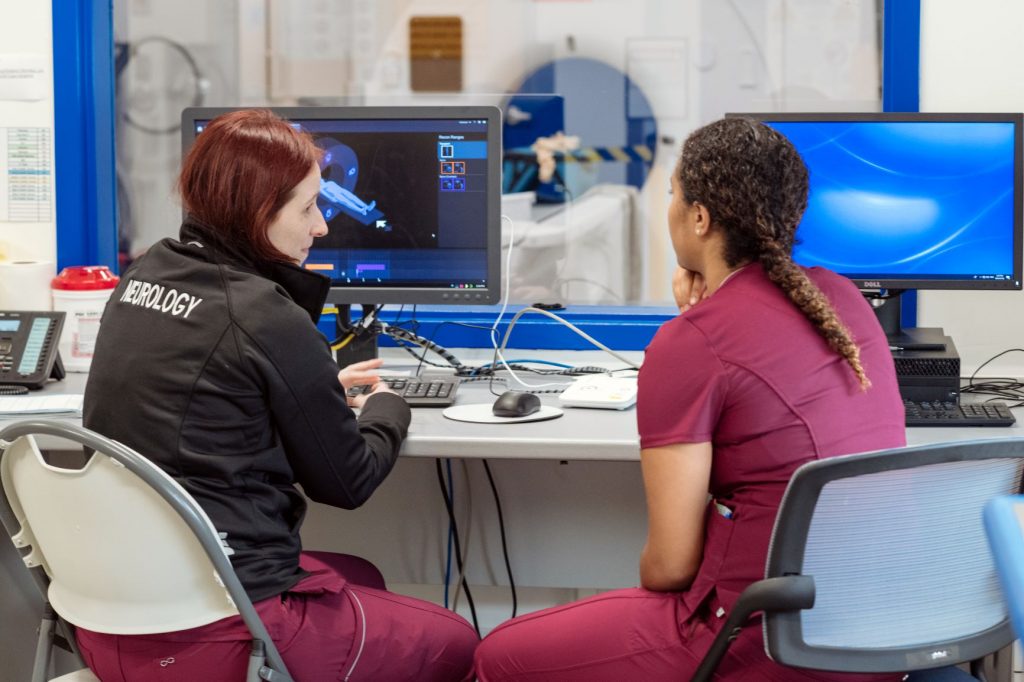
About The Company
Animal Health Partners Toronto is a new veterinary emergency and specialty hospital modeled after best practices in human medicine. Lead by a team of highly qualified veterinary specialists, Animal Health Partners Toronto Emergency and Specialty Hospital is bringing the world’s best practices of private human healthcare to veterinarian care.

The technical proficiency and medical equipment at Animal Health Partners equals or exceeds that found in sophisticated human hospitals.
Animal Health Partners provides the highest-quality Veterinarian Services in Toronto. Our specialists combine their collective knowledge and skill in the treatment of complex or multifaceted cases. We serve as an extension of your family veterinarian and provide exceptional specialty care by treating our patients as if they were our own pets.
Our Core Values
Quality
At the root of all we do at Animal Health Partners is a commitment to the highest quality of veterinary care. This means that the diagnostic tests we run and the treatments we provide are informed by the best available scientific evidence and implemented by the most highly qualified veterinarians and staff.
Compassion
We understand that the experience of illness and injury can be painful and scary for pets and their owners. We strive to reduce discomfort as much as possible using gentle handling techniques, appropriate pain-management, stress-reducing design features, non-invasive interventions and a continuous emphasis on empathic patient-centered care.
Service
Intrinsic to our goal of providing the highest quality of medicine is providing efficient, courteous, attentive and responsive service to the owners and referring veterinarians that have entrusted us with the care of their pets and patients.
Innovation
Medicine is rapidly evolving. Our technologically advanced institution is equipped to employ and pioneer the most cutting-edge diagnostic and treatment modalities available in veterinary medicine with the goal of improving the quality of care for all patients.
Partnership
High-quality care and optimal patient outcomes rely not on any one individual but on the strength of the connections between many. Ensuring the best possible outcomes for our patients means creating solid partnerships with their owners and referring veterinarians. It also means establishing relationships more broadly with the community, the human medical field and with industry.
- June, 25
- 4967
- Letter from the vet
- More
Tips on How to Curtail Your Companion Dog’s Barking
Tips on How to Curtail Your Companion Dog’s Barking
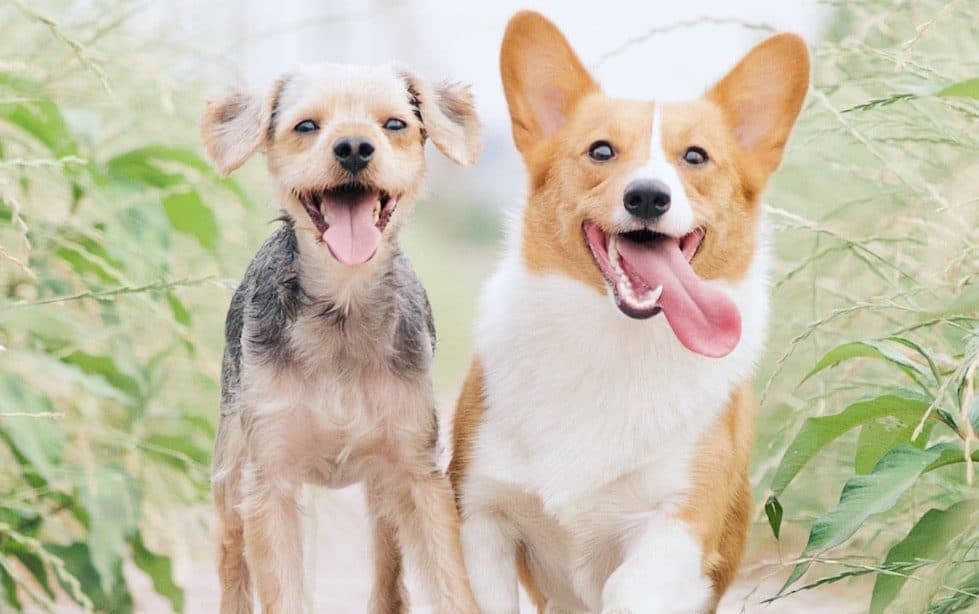
Written by
Katie Stokes

Dogs bark to alert you to something, to show you they’re happy and ready to play, to greet you or even to ask for something. But when it gets to be too much and too frequent, there are steps you can take to reduce the amount of barking without ignoring your dog’s needs.
Dogs are easy to live with and enrich our lives daily. One of the ways they get our attention is by barking. It’s their way of communicating that they need something. Whether it’s the bathroom, hunger, lack of stimulation, a desire for a specific toy or a need to exercise or play, dogs always have a reason for barking. When it’s excessive, it may be happening due to a lack of training, behavioural problems or even fear. Interestingly enough, barking is actually a self-reinforcing behaviour in that dogs self-sooth and reward themselves by barking. As a result, some cases of barking are harder to minimize than others.
The biggest mistake people make when trying to stop a dog from excessively barking, is using punishment-based tactics like sprays, shocks or pronged collars. Not only are they inhumane and ineffective, but the emotional fallout can be disastrous and actually cause more problems with behaviour.
IInstead, simply pay attention to what triggers your dog. If it’s the doorbell, for example, you may need to desensitize your dog to the trigger and train them to do something other than barking when they hear it – practicing positive reinforcement is a great tactic! A simple method would be to train/teach your dog to sit when the doorbell rings and reward them with a treat when they do it successfully. Gradually they’ll learn this new behaviour and the end result will be a win-win.
It sounds simple, but make sure you don’t reward your dog for excessive barking, or you’ll never make any headway. Sometimes this can be difficult because pet parents don’t realize that rewards are more than just treats for dogs. Rewards can be attention-based too so be aware of how you address your dog when they’re barking. For them, any attention is good attention.
If your dog barks constantly even though their immediate needs are being met, you’ll want to focus on minimizing barking in general. A great way to approach this is to imagine the bark as something you can control on cue. When you ask for a bark, reward it. When you don’t, no treats are given. Another interesting approach would be to teach/train your dog to use inside bark (just like you would explain to a child to use their inside voice) which is low-sounding bark.
Interestingly enough, sometimes the breed of dog you have can also affect its desire to bark. To some extent, all dogs are bred to be vocal by humans. Centuries ago a dog keeping watch and alerting owners when there were signs of danger was very useful so some pups like hounds are chattier with their barking because of their breeding. This doesn’t mean the dog is un-trainable, it just means you can’t expect them to be silent all the time like some dog breeds. Do your research to learn more about the breed and it may provide some additional insight into behaviour.
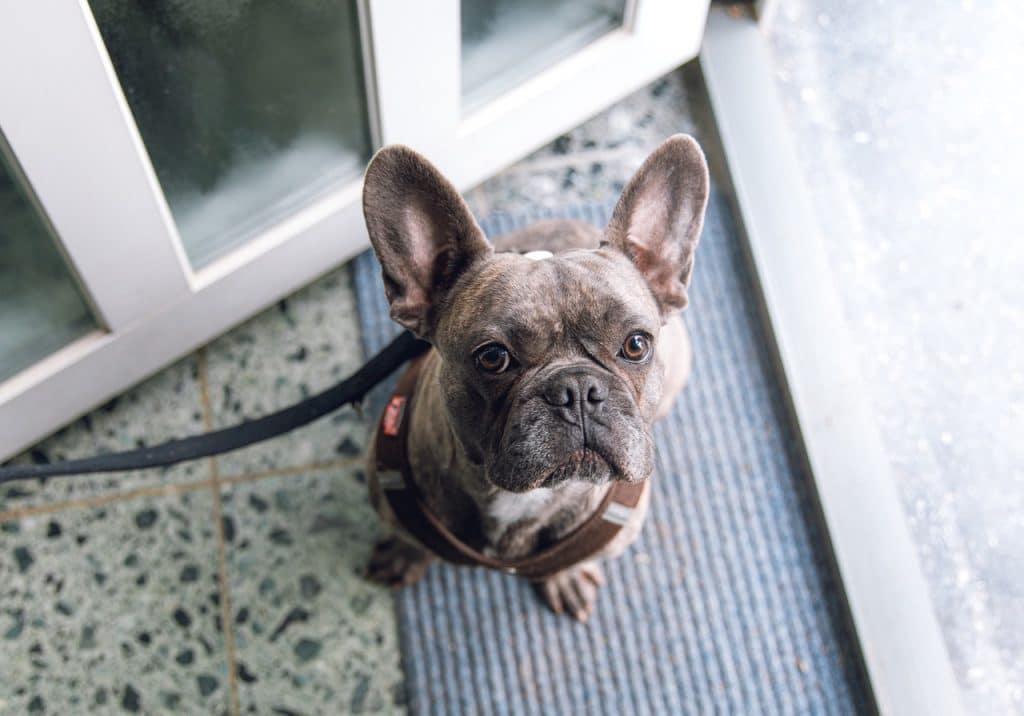
- May, 27
- 5052
- Scribblin' Dogs
- More
